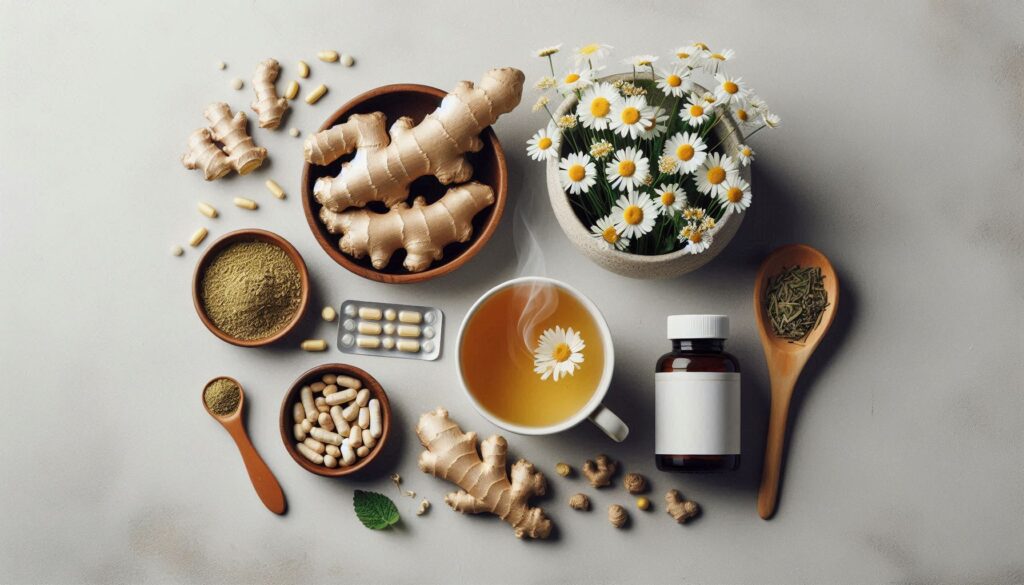Period pain, or dysmenorrhea, is a common issue affecting millions of women globally. For many, it’s more than just a monthly inconvenience; it can disrupt daily life, impacting work, relationships, and overall well-being. Conventional pain relief methods like over-the-counter medications can provide temporary relief but often fail to address the root causes of period pain. This has led to a growing interest in holistic approaches that aim to provide long-term, sustainable period pain relief by working with the body’s natural rhythms. In this guide, we’ll explore how you can better understand your menstrual cycle and take control of period pain relief through a holistic approach.

Understanding Menstrual Pain and Its Causes
Types of Dysmenorrhea
Period pain can be categorized into two main types:
- Primary Dysmenorrhea: This is the most common type and occurs as a result of normal menstruation. It’s caused by the release of prostaglandins—hormone-like substances that trigger uterine contractions—leading to cramping and discomfort, especially in the lower abdomen, back, and thighs.
- Secondary Dysmenorrhea: This type is less common and often linked to underlying medical conditions such as endometriosis, fibroids, or pelvic inflammatory disease (PID). The pain associated with secondary dysmenorrhea tends to be more intense and may worsen over time.

Common Causes of Period Pain
The primary cause of period pain lies in hormonal fluctuations, particularly an increase in prostaglandins, which cause the uterus to contract. These contractions help expel the uterine lining but can also cause discomfort. Other contributing factors include:
- Hormonal imbalances
- Changes in estrogen and progesterone levels can exacerbate symptoms.
- Underlying medical conditions
- Endometriosis, fibroids, or infections can lead to more severe pain.
- Mind-body connection
- Stress, anxiety, and emotional well-being can also influence the severity of period pain. High-stress levels can increase inflammation, heightening the body’s sensitivity to pain.
Holistic Methods to Manage Period Pain
Anti-Inflammatory Diet Changes for Period Pain Relief
What you eat can significantly impact your experience of menstrual pain. Incorporating nutrient-dense, anti-inflammatory foods can help reduce inflammation and ease discomfort, offering natural period pain relief.
- Anti-inflammatory foods: Include leafy greens (spinach, kale), berries, turmeric, and fatty fish like salmon to reduce inflammation in the body.
- Magnesium and calcium-rich foods: Magnesium helps relax muscles and reduce cramping. Consider adding magnesium-rich foods like dark chocolate, avocados, and nuts. Calcium, found in dairy, fortified plant-based milks, and leafy greens, can also help regulate muscle contractions.
- Avoid trigger foods: Processed foods, sugar, caffeine, and alcohol can contribute to inflammation, worsen cramps, and increase mood swings.

Read more
Herbal Remedies for Soothing Menstrual Pain
Herbal remedies have been used for centuries to manage menstrual discomfort naturally. Here are a few that have shown promise for period pain relief:
- Ginger: Known for its anti-inflammatory properties, ginger can help reduce period pain. It works similarly to non-steroidal anti-inflammatory drugs (NSAIDs) in reducing the production of prostaglandins.
- Chamomile: Chamomile tea is soothing and can help relax the uterus while also promoting better sleep.
- Cramp bark: As its name suggests, cramp bark is a traditional remedy for reducing menstrual cramps and relaxing the muscles.
Always consult a healthcare provider before trying new herbs, especially if you’re on medication or have any underlying health conditions.

Lifestyle Adjustments to Alleviate Pain
Adopting healthy lifestyle habits can make a significant difference in managing menstrual discomfort and achieving effective period pain relief.
- Heat therapy: Applying a heating pad to the lower abdomen or taking a warm bath can help relax tense muscles and relieve cramps.
- Gentle exercise: Activities like yoga, walking, or light stretching can promote blood circulation and release endorphins, which act as natural painkillers.
- Stress management techniques: Practices like meditation, deep breathing exercises, and mindfulness can help reduce stress and decrease the body’s sensitivity to pain.
- Adequate sleep and rest: Ensuring that you get enough rest is vital for hormonal balance and overall pain management. Aim for 7-9 hours of sleep per night, especially leading up to and during your period.

Complementary Therapies to Consider
In addition to diet and lifestyle changes, complementary therapies can provide additional period pain relief:
- Acupuncture and acupressure: These ancient practices have been shown to reduce period pain by promoting blood flow, reducing inflammation, and releasing tension.
- Aromatherapy: Essential oils like lavender, clary sage, and marjoram may help reduce pain when used in massage or diffused in the air.
Always consult with a qualified practitioner before starting any complementary therapy to ensure it’s safe and effective for you.
Understanding Your Cycle for Long-Term Pain Relief
Understanding your menstrual cycle is key to managing period pain. By tracking your cycle, you can identify patterns and anticipate when pain is likely to occur, giving you the ability to plan and take preventive measures.
- Cycle tracking methods: Charting your basal body temperature (BBT) and observing cervical mucus can help you predict ovulation and track hormone changes throughout the month. You can also use apps designed for cycle tracking.
- Proactive pain management: By understanding your body’s unique rhythms, you can begin taking supplements, adjusting your diet, or practising relaxation techniques before your period starts, reducing the intensity of pain when it arrives.

When to Seek Professional Help for Period Pain
While period pain relief is possible through holistic methods, severe or persistent pain can indicate an underlying issue that requires medical attention. Be aware of these red flags:
- Pain that is severe enough to interfere with daily activities
- Period pain that worsens over time
- Pain accompanied by heavy bleeding, irregular cycles, or other unusual symptoms
If you experience any of these symptoms, consult a healthcare provider. Conditions like endometriosis, fibroids, or pelvic inflammatory disease may require specialized treatment. Open communication with your doctor about your menstrual health is essential for finding the right solutions.
Achieving effective period pain relief doesn’t have to control your life. By taking a holistic approach, you can empower yourself to manage pain naturally and effectively. Explore different strategies—whether it’s dietary changes, herbal remedies, lifestyle modifications, or complementary therapies—and find what works best for your body. Listen to your body, track your cycle, and don’t hesitate to seek professional advice when needed. At SaziBox Health, we’re committed to helping you master your menstrual health and live a life free from pain.





[…] blood loss can deplete iron stores, particularly in women with heavy periods. Learn more about natural remedies for period pain to reduce discomfort and associated […]